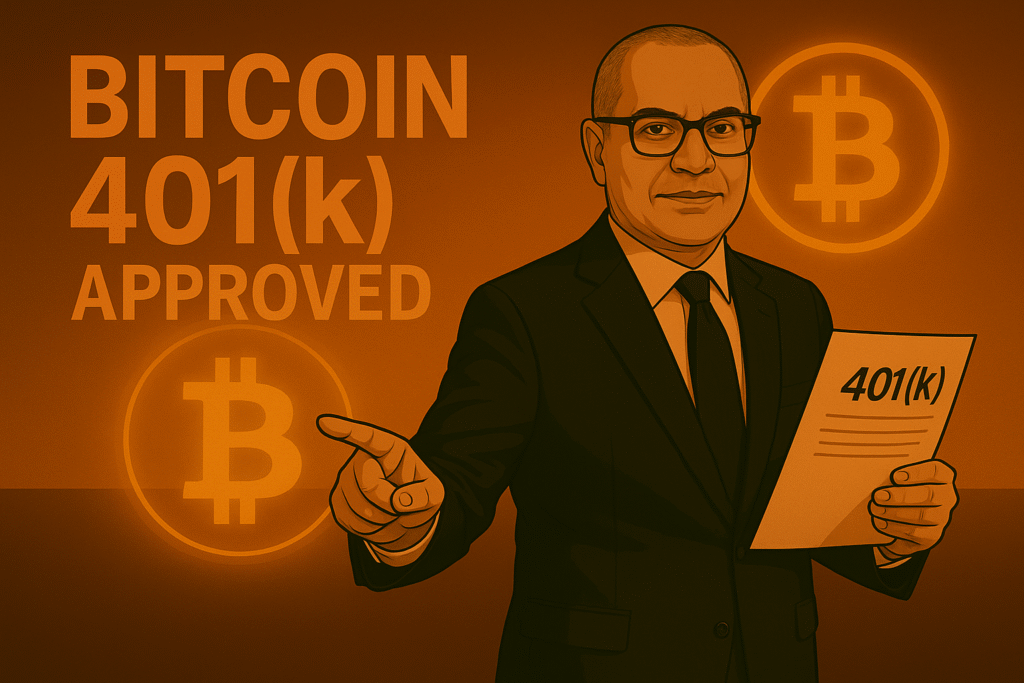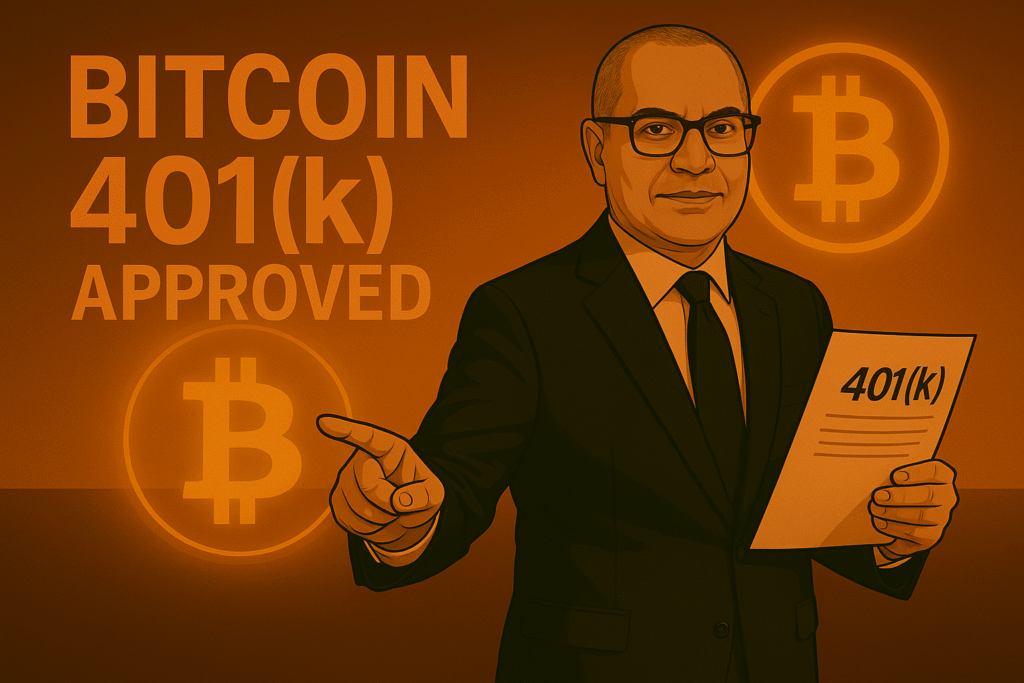
Bitcoin in Your 401(k): A Conservative, Rules-Based Way to Protect Purchasing Power (2025)
A clear, retirement-first guide for cautious savers (52–65) to add a small Bitcoin sleeve—without hype, and without risking core income.
Good morning—Randall here. If you’re in your 50s or early 60s, you’ve done the hard part: earn, save, repeat. But inflation keeps nibbling your dollars, markets are jumpy, and you’re wondering how to preserve spending power without swinging for the fences. This post shows a conservative path: secure your near-term income first, then consider a small, rules-based Bitcoin sleeve (≈1–5%) in your long-term “growth” bucket. No FOMO, no day-trading—just a steady plan you can explain to a spouse or advisor in five minutes.
🎥 30-Second Explainer: Bucket First → Bitcoin Second
Why this matters for late-career savers
The problem: Retirement isn’t just about balances—it’s about what your money buys. Over a 20–30-year retirement, even moderate inflation can cut purchasing power in half. Meanwhile, the first 5–10 years of withdrawals are vulnerable to sequence-of-returns risk (selling assets after a drop).
The fix: Separate your money by time horizon. Fund near-term income with cash/short-duration bonds (so you’re not forced to sell). Keep your long-term “growth” sleeve for 10+ years out. That’s where a small Bitcoin allocation can live—as an optional inflation/purchasing-power hedge alongside equities.
Where does Bitcoin fit—practically?
- Tiny and rules-based: Consider a 1–5% sleeve of investable assets. Write it down: “target 3%, rebalance annually.”
- Placement: If your plan allows a compliant ETF in a brokerage window, use it; otherwise track it in a side IRA/brokerage.
- Time horizon: It belongs in your 10+ year growth bucket. Your income buckets cover years 1–10 so you don’t touch BTC during volatility.
- Behavior: Dollar-cost average (DCA), ignore headlines, rebalance on schedule—not emotions.
🎥 3-Minute Overview: How to Place a Small Bitcoin Sleeve
Quick walkthrough of buckets, sizing, and simple execution (DCA + annual rebalance).
A simple, illustrative model
- Bucket 1 (Years 1–3): Cash / T-Bills / short-term bonds.
- Bucket 2 (Years 3–10): Quality bonds, dividend/value stocks, TIPS.
- Bucket 3 (10+ Years): Core equity index + 1–5% Bitcoin sleeve. Rebalance annually near your RMD date.
Execution checklist (ELI5 clarity)
- Write your rule: “Target 3% BTC, rebalance annually.”
- DCA in: Automate small weekly/monthly buys.
- Placement: 401(k) brokerage window / IRA if available.
- Tax-aware: Coordinate RMDs, Roth conversions, withdrawals.
- Security basics: Use regulated custodians. If self-custody later, start tiny and never share your seed phrase.
Common questions
“Isn’t Bitcoin too volatile?” That’s why it’s tiny and long-term. Your income buckets handle years 1–10.
“Am I too late?” No. Start small: DCA $10–$25/week, write a rule, rebalance yearly.
“Do I need a wallet?” Not to begin. Many start with a regulated ETF/IRA option. Move to self-custody later if comfortable.
📖 Today’s Book Takeaway (Good / Bad / Ugly)
The Bitcoin Standard — Saifedean Ammous
- Good: Clear sound-money framework that explains why Bitcoin matters.
- Bad: The tone can feel ideological, leaning more like a manifesto than a retirement guide.
- Ugly: Little direct retirement integration — no 401(k) or IRA guidance.
📌 Takeaway: Read it for the history and the foundation of sound money, then pair those insights with today’s bucket model to make it practical for retirement.
📚 Explore more books like this in the Wealth Stack Picks Library.
⭐ Affiliate Pick of the Day:
The Bitcoin StandardA primer on sound money before adding BTC to your retirement.
📚 Browse More
Wealth Stack Picks LibraryDisclaimer: Educational only—not financial, legal, or tax advice. This post may include affiliate links to products I personally use and recommend.

